This report offers an overview of the tourism sector in Iraq as it examines the reality of the sector through several lenses using the available data and resources. In 2008, the international arrival of tourists was 864,000 and reached its highest value of 1.5 million tourists in 2010 but started decreasing ever since to reach 892,000 tourists in 2013. DOWNLOAD THE RESEARCH - English DOWNLOAD THE RESEARCH - Arabic This publication is part of Business LANDSCAPE series which a series of research publication aims to highlight the current situation of Iraq’s economy and private sector through publishing researches and data and make it freely available for the benefit of investors, and the local and international community This study is published in partnership with German Government via the Deutsche Gesellschaft für Internationale Zusammenarbeit (GIZ) GmbH. | 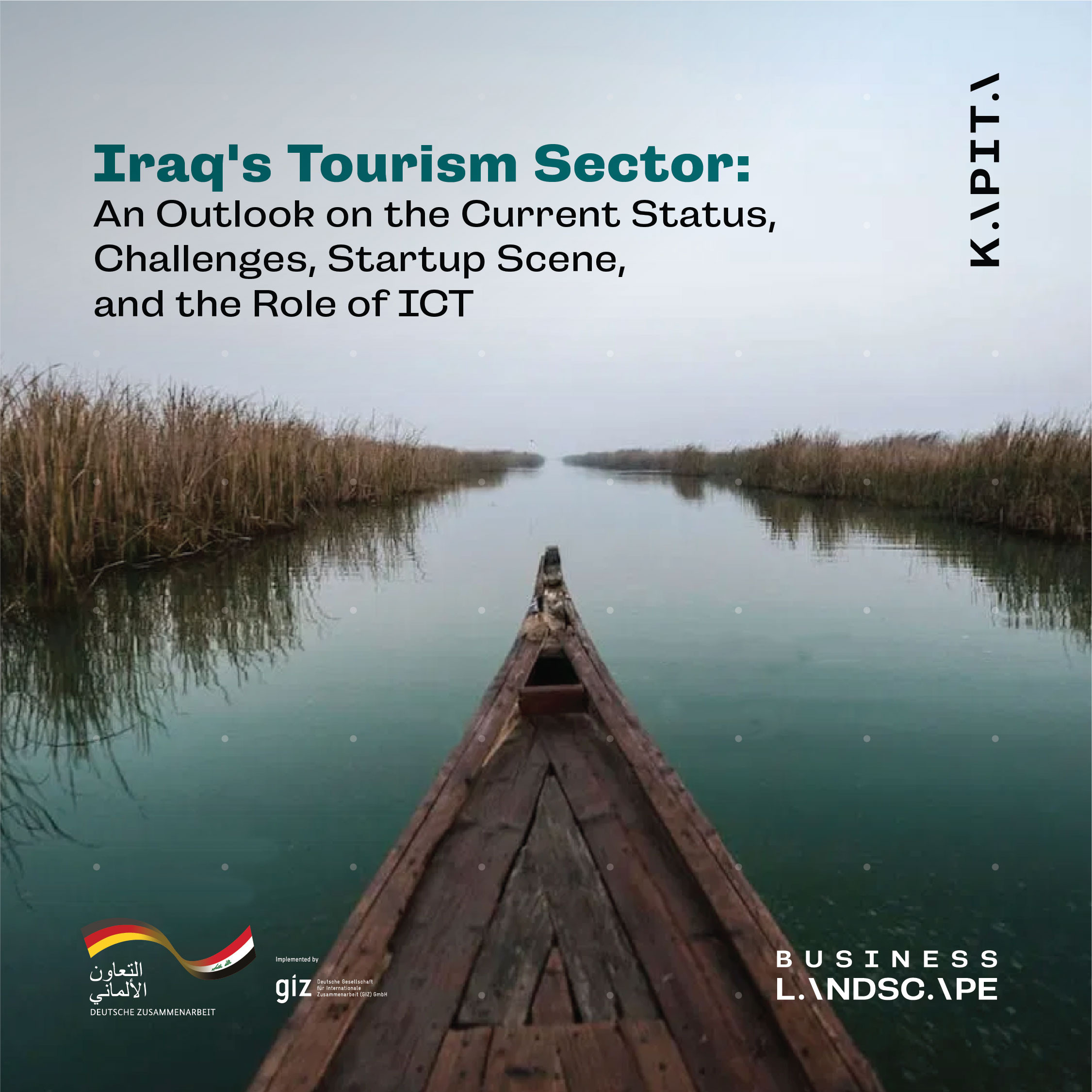 |
The tourism and travel sector is a very vast sector that is integrated with many different industries and other sectors such as hospitality, accommodation, transportation, food and beverages, catering, and others. The tourism sector can contribute to the non-oil economy, diversify the means of income, create jobs, and support the private sector businesses operating in this field, in return, playing a role in the development of the economy. Globally, travel and tourism have contributed to around 10.4% of the global gross domestic product (GDP) in 2019 (The United Nations World Tourism Organization, 2019).
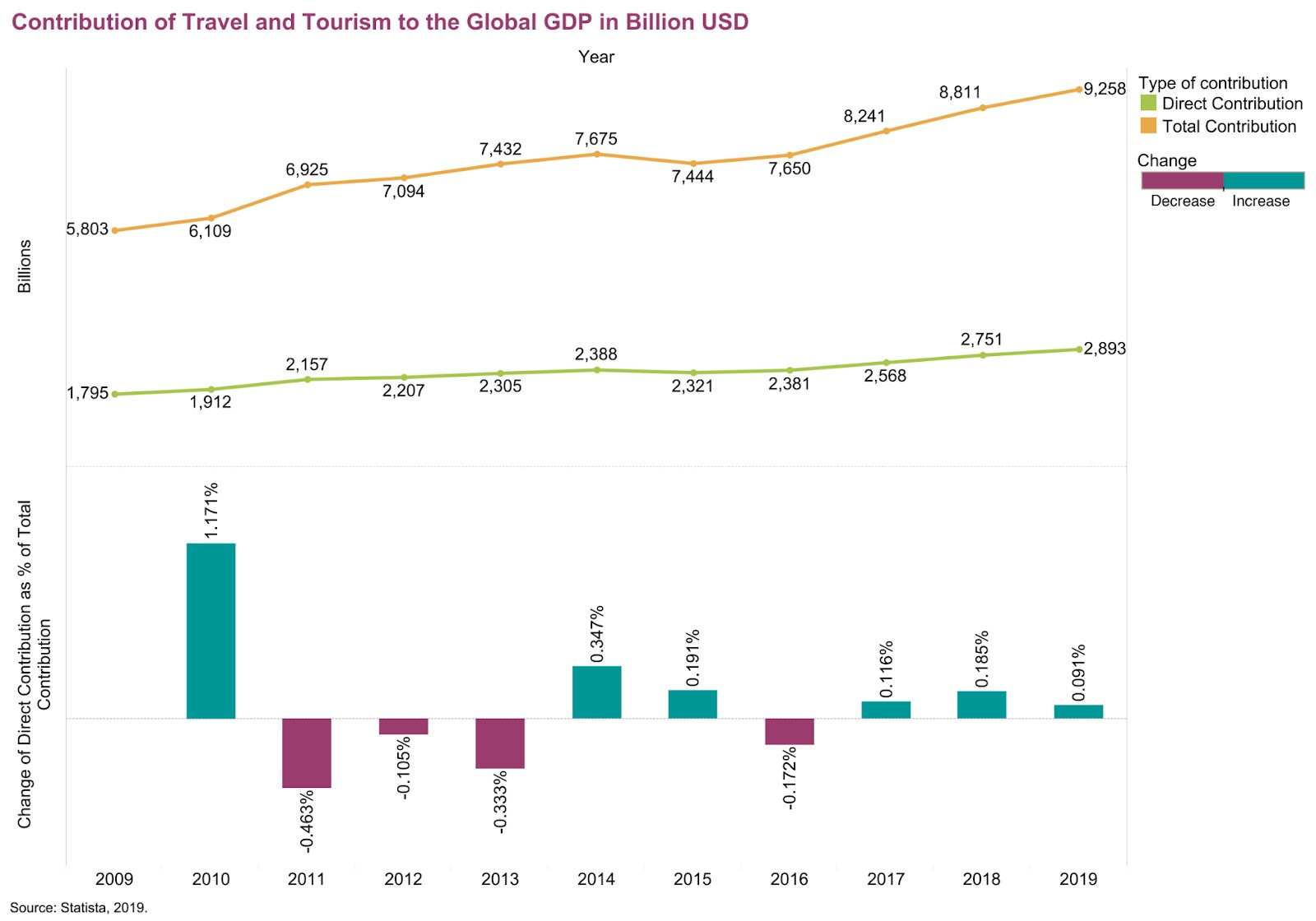
Iraq is a country that has a very rich history and myriad cultures that extend back to the first known civilizations. It is the heart of many astounding historical, archaeological, and religious sites. It also enjoys a diverse natural landscape from the mountains and waterfalls in the north to the marshes in the south.
Hence, this provides many opportunities for domestic and international tourism to thrive. In 2019, this sector provided 165,033 jobs in Iraq and contributed to around 1.9% of employment (World Travel and Tourism Council, 2019)
This report offers an overview of the tourism sector in Iraq as it examines the reality of the sector through several lenses using the available data and resources. In 2008, the international arrival of tourists was 864,000 and reached its highest value of 1.5 million tourists in 2010 but started decreasing ever since to reach 892,000 tourists in 2013.
International tourism receipts sharply decreased since 2016 to hit 1.98 billion USD in 2018 but it recovered to score their highest record in 2019 with 3.59 billion USD, however, they contributed to a share of 4.04% only of exports that year.
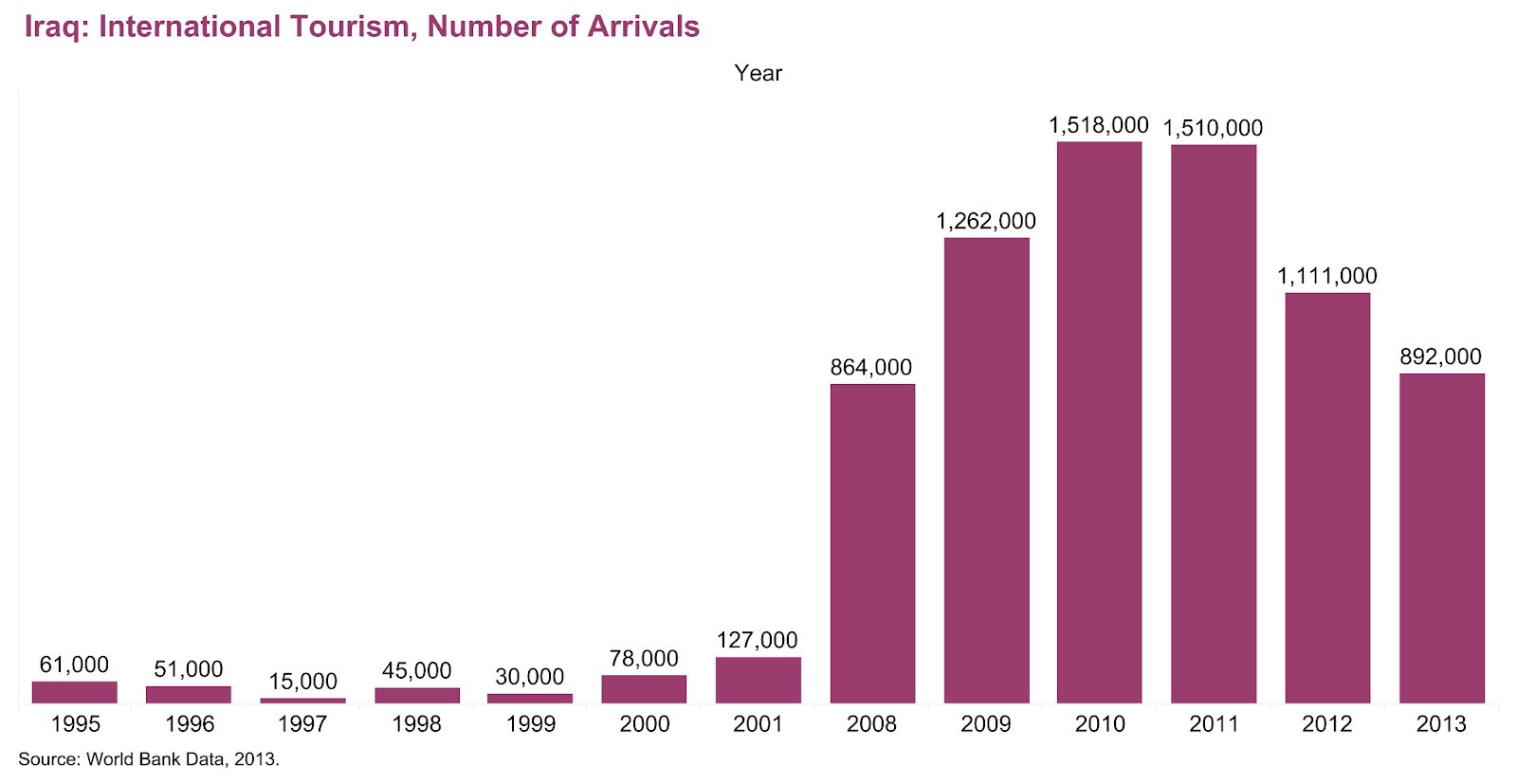
Moreover, this report follows the segmentation of the Central Statistical Organization in reporting the data where two seasons are identified, the normal, and the peak. The report also analyzes the relative distribution of tourists according to different factors including the purpose of the trip, gender, nationality, country of residence, and the duration of stay. Iraq has witnessed the arrival of a total of 137,143 tourists in 2019 during the normal period, while the number of tourists reached 5,993,217 during the peak period. Around 35.5% of tourists visited Iraq for religious tourism in the normal season while this percentage grew to around 72% in the peak period.
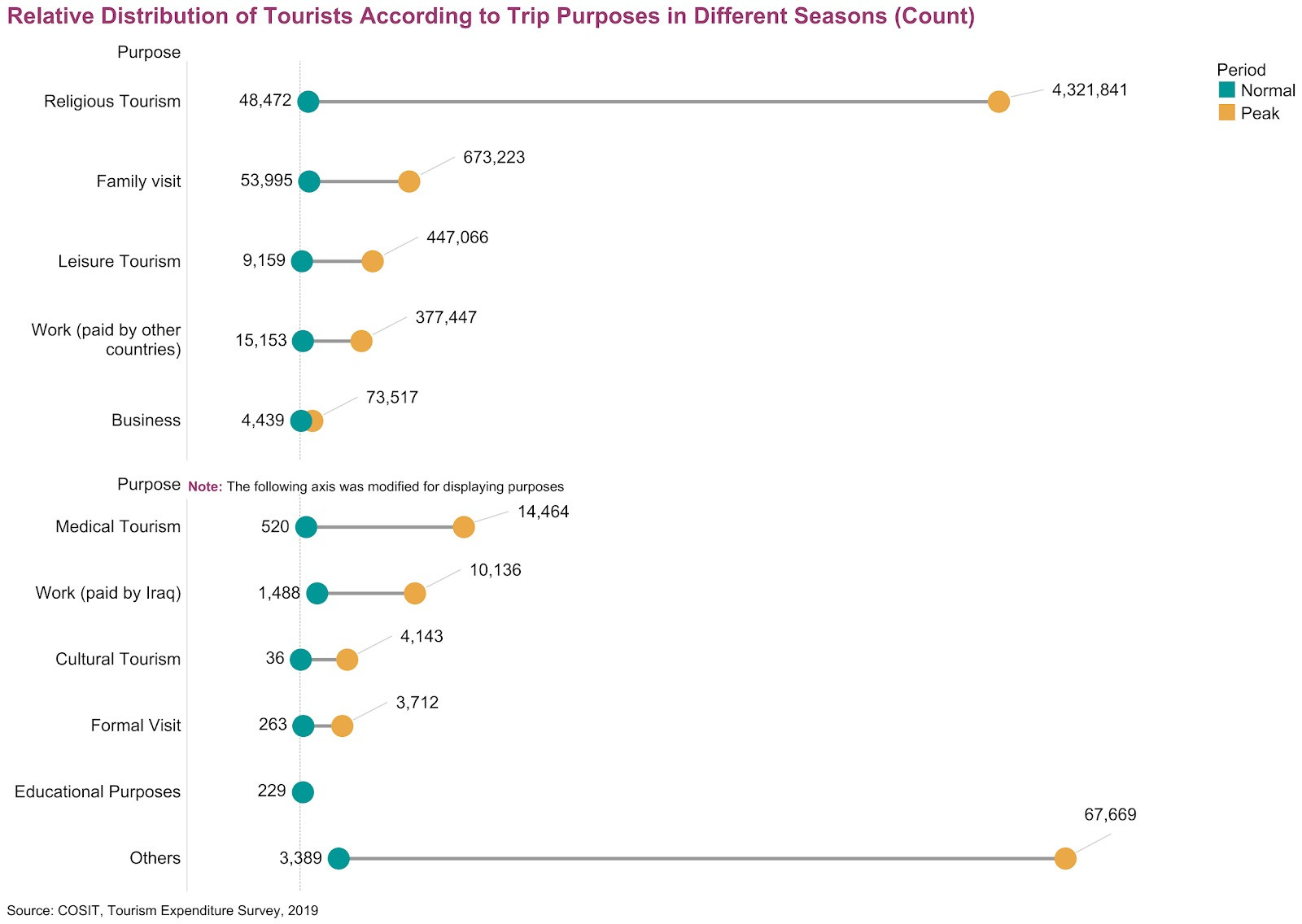
In addition, the report focuses on three main types of tourism, culture and heritage, nature and leisure, and religious tourism. It also goes into tourism expenditures for each type and provides brief introductions of some of the main tourist sites and attractions in Iraq.
The report also offers a glimpse into the hospitality sector in Iraq due to its inseparable function from the tourism sector. Restaurants hold the largest share of this sector as it was estimated to contribute to a swapping 89% of this sector in Iraq and 77% in Kurdistan in 2013. (UNESCO, 2019).
The number of hotels and tourist accommodations has reached 1666 accommodations in 2018. The majority of these complexes are located in Karbala by 44.9%, while Baghdad has a share of 23.1% and Najaf has 23.2%. The private sector prevails in the hospitality industry as 99.6% of tourist accommodations are private.
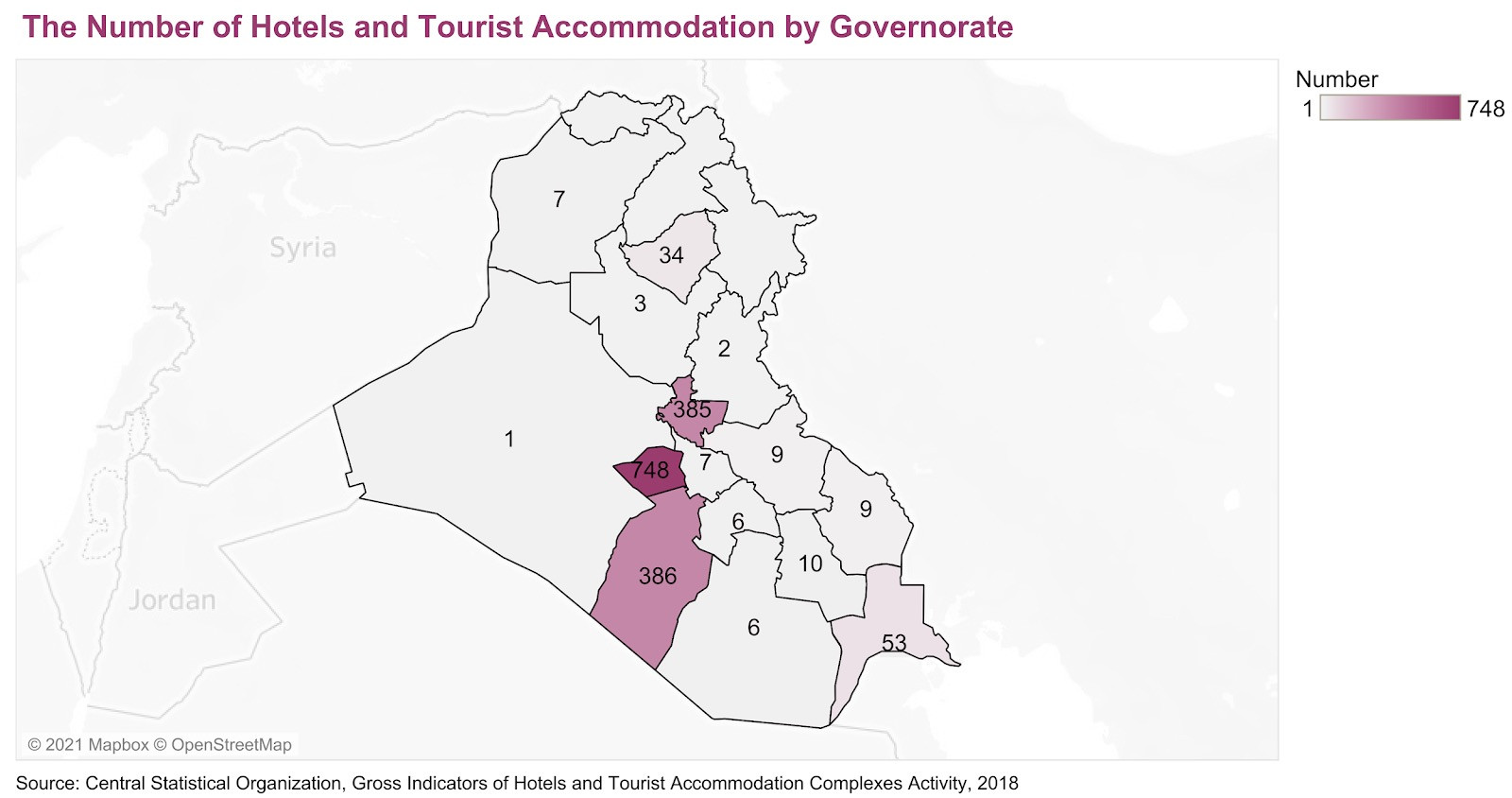
Furthermore, the report touches on the importance of Information and communications technology (ICT) in the tourism sector as it adopts new business models that accelerate its expansion. The report also identifies some of the startups operating in this sector in Iraq and the MENA region. And finally, concludes with the main issues and recommendations.
